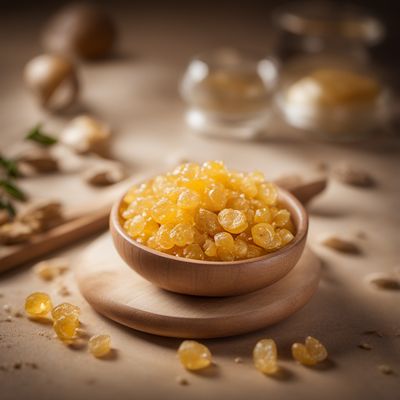
Ingredient
Cods, hakes, haddocks
The Versatile Trio: Exploring the Delights of Cods, Hakes, and Haddocks
Cods, hakes, and haddocks are all members of the Gadidae family and share similar characteristics. These fish have a lean, flaky flesh that is white when cooked. They possess a mild, slightly sweet flavor with a hint of brininess. The texture is firm yet tender, allowing them to hold their shape well during cooking. Their appearance is characterized by a streamlined body, silver skin, and a prominent jawline.
Origins and history
Cods, hakes, and haddocks have a rich history in European and North American cuisines. They are native to the cold waters of the North Atlantic Ocean and have been a staple food source for centuries. These fish were highly valued by early explorers and settlers due to their abundance and nutritional value. They have played a significant role in the development of traditional dishes such as fish and chips, chowders, and fish stews.
Nutritional information
Cods, hakes, and haddocks are excellent sources of lean protein, omega-3 fatty acids, and essential minerals such as selenium and phosphorus. They are low in calories and fat, making them a healthy choice for those seeking a nutritious and balanced diet.
Allergens
Cods, hakes, and haddocks are known to be allergenic to individuals with fish allergies.
How to select
When selecting cods, hakes, and haddocks, look for fish with clear, bright eyes, shiny skin, and a fresh, mild aroma. The flesh should be firm to the touch and bounce back when pressed. Avoid fish with dull eyes, discolored skin, or a strong fishy smell.
Storage recommendations
To maintain the freshness and quality of cods, hakes, and haddocks, store them in the refrigerator at a temperature between 32°F and 38°F (0°C and 3°C). It is best to consume them within 1-2 days of purchase. To extend their shelf life, you can also freeze them in airtight containers or freezer bags for up to 3 months.
How to produce
Cods, hakes, and haddocks are typically caught in the wild by professional fishermen. They require specific fishing techniques and equipment to ensure their sustainable harvest. Amateur fishermen can try their luck by joining fishing charters or guided tours that specialize in deep-sea fishing.
Preparation tips
Cods, hakes, and haddocks can be prepared using various cooking techniques such as baking, grilling, frying, or poaching. They are commonly used in dishes like fish and chips, fish stews, fish tacos, and fish cakes. To enhance their flavor, consider marinating them in citrus juices or herbs before cooking. When grilling or baking, brush them with a little olive oil to prevent them from drying out.
Substitutions
If cods, hakes, or haddocks are not available, suitable substitutes include other white fish such as pollock, whiting, or sole. These fish share similar characteristics and can be used interchangeably in most recipes.
Culinary uses
Cods, hakes, and haddocks are widely used in various cuisines around the world. They are commonly used in classic dishes like fish and chips, fish stews, chowders, and fish pies. They can also be grilled, baked, or pan-fried and served with a variety of sauces or accompaniments. Their versatility allows them to be incorporated into salads, tacos, sandwiches, and pasta dishes.
Availability
Cods, hakes, and haddocks are commonly available in regions with access to the North Atlantic Ocean, including countries such as the United Kingdom, Norway, Iceland, Canada, and the United States.
More ingredients from this category

Blue whitings
The Ocean's Silver Delight

Whiting
The Delicate White Fish

Ling
The Delicate Delight

Alaska pollock
The Versatile Delight: Alaska Pollock

Grenadiers
Exquisite Ocean Gems

Norway pout
The Silvery Delight: Exploring the Culinary Wonders of Norway Pout

Hakes
The Versatile Hake

Pollack, pollock
Versatile White Fish

Haddock
The Versatile White Fish

Tusk
"The Ivory of the Sea: Exploring the Delicate Flavor of Tusk"

Cod
The Versatile Delight
